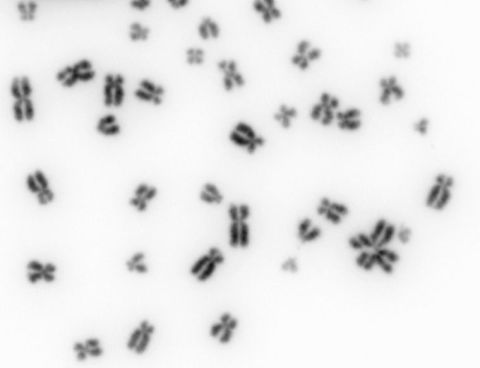Mutations in the BRCA1 gene are one of the most commonly associated genetic mutations linked with cancer. BRCA1 gene mutations often result in predisposition to breast and ovarian cancer, with CRUK specialists estimating that around 7 in 10 women (70%) with faults in a BRCA gene will develop breast cancer by the age of 80.
This is because healthy cells and tissues normally rely on BRCA1 to coordinate the repair of DNA breaks in rapidly dividing cell populations in a highly accurate fashion.
This is vital as DNA breaks frequently occur in dividing cells in the body, and when breaks are mis-repaired, they can lead to harmful mutations that will be passed down through the cell lineage, where they may trigger formation of cancerous tumours.
However, when there are mutations in the BRCA1 gene, this beneficial activity is often lost, and this is a common step in the early stages of the genesis of breast cancer. Because of the loss of BRCA1 activity, DNA breaks start to be repaired by alternative, more inaccurate DNA repair pathways, leading to genome rearrangements and the rapid acquisition of mutations that speed up tumour development and allow tumours to develop resistance to anti-cancer therapies.
But how does BRCA1 function, and why can its loss lead to a rise in alternative, error-prone repair mechanisms?
A recent study published in Nature by Ross Chapman and Jordan Becker resolves this long-standing question.
Professor Chapman and his team have discovered the precise mechanism by which the BRCA1 protein detects and engages with DNA breaks in the genome, and where it assembles the large number of DNA repair proteins that are required to ensure that DNA is repaired accurately. The team discovered this assembly occurs due to the activity of BARD1, BRCA1's lesser-known partner protein, that they found was able to recognise a 'histone code' generated in the chromatin that packages our DNA. This code signals the precise locations of DNA breaks in our vast genomes.
Interestingly, the research showed this histone code was closely related to the signal recognised by 53BP1, another DNA repair protein whose purpose is to instead generate intentional mutations in antibody genes. These mutations are important, as they allow our white blood cells to generate antibodies with differing specificities and functions, in response to the vast variety of different infections and foreign antigens our immune systems encounter.
Remarkably, the team then found that when 53BP1 was deleted, BRCA1’s DNA repair functions no longer relied on BARD1, and its ability to recruit BRCA1 to genomic sites of DNA damage. These results therefore revealed that the BRCA1 tumour suppressor protein evolved specifically to counteract the threat that specialised, yet error-prone, DNA repair pathways pose to dividing cells in healthy tissues, ensuring that they only function in the correct contexts such as the developing immune system where they are vital for human health.
This research was funded by Cancer Research UK (CRUK) Career Development Fellowship and the CRUK Oxford Centre.
The Chapman Group, based at the Weatherall Institute of Molecular Medicine – Radcliffe Department of Medicine, investigates role of recombination mechanisms in immunity and cancer. The accurate repair of DNA breaks is fundamental for protecting our genomes against cancer-causing mutations. The Chapman group are interested in how cells and different tissues strike an appropriate equilibrium between accurate and mutagenic DNA repair mechanisms, so that we can understand why faults in this regulation lead to cancer, and devise innovative strategies to exploit these faults in cancer therapies.



